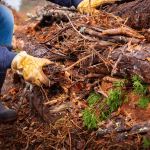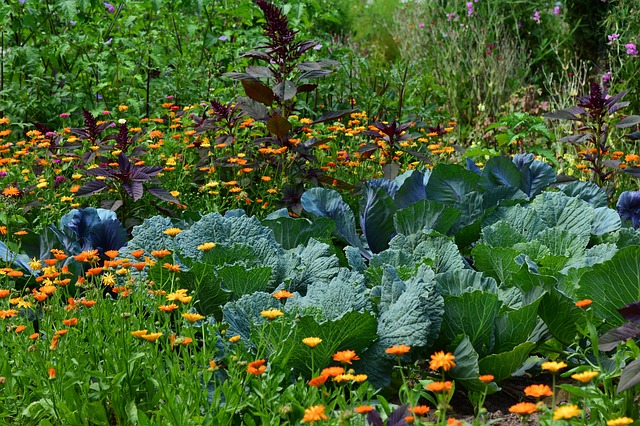Hugelkultur mistakes
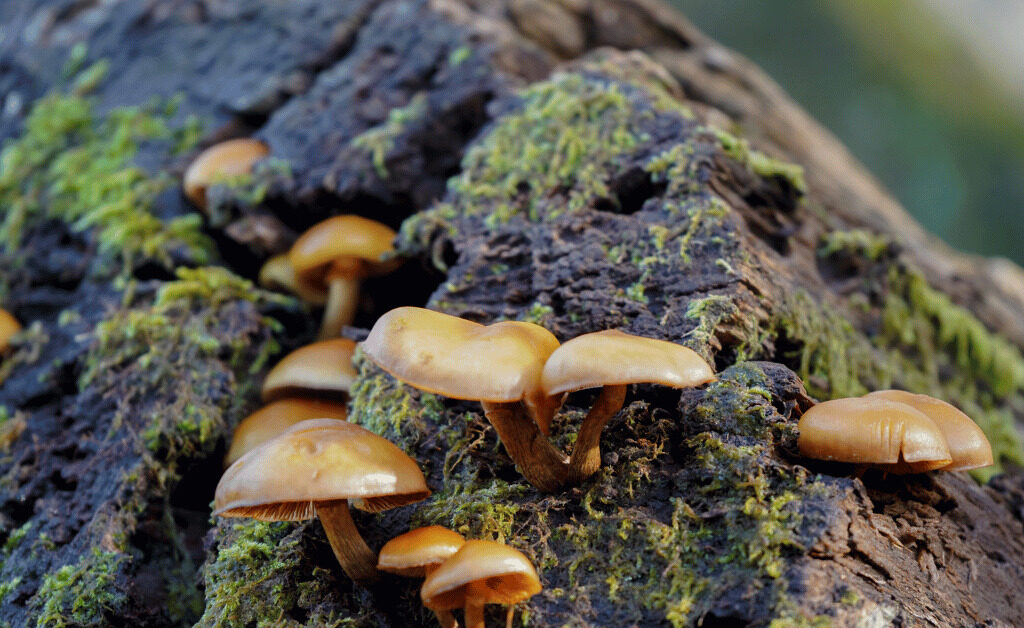
Hugelkultur, a centuries-old sustainable gardening technique, has gained significant attention for its eco-friendly approach to soil enrichment and water conservation. While the method offers numerous advantages, from enhanced soil fertility to efficient water usage, the road to a successful Hugelkultur garden is fraught with potential mistakes. These errors can not only compromise the health of your garden but also negate the environmental benefits that Hugelkultur aims to provide.
This article serves as a comprehensive guide to help both novice and experienced gardeners navigate the common pitfalls associated with Hugelkultur. Whether you’re grappling with issues related to wood selection, watering, or plant choices, this guide aims to provide actionable insights to steer clear of these mistakes. Additionally, as someone who has personally ventured into the world of Hugelkultur, I will share my own missteps at the end of this article to offer a firsthand perspective on what to avoid.
By understanding and sidestepping these common errors, you can optimize your Hugelkultur garden for both productivity and sustainability, irrespective of your geographical or climatic conditions.
Common Mistakes in Hugelkultur Design
While Hugelkultur is not the only path to a successful garden, its unique design can offer several benefits, such as efficient decomposition and optimal plant growth. However, if not carefully planned, certain design choices can lead to challenges down the line. Here are some common design-related mistakes to be aware of.
Incorrect Wood Selection
One of the first steps in setting up a Hugelkultur bed is choosing the right type of wood. However, not all wood is created equal.
Types of Wood to Avoid
- Softwoods like pine and spruce: These can make the soil too acidic.
- Wood treated with chemicals: These can leach harmful substances into the soil.
The Impact of Using Inappropriate Wood
- Poor soil quality
- Reduced microbial activity
- Potential harm to plant roots
| Suitable Wood Types | Unsuitable Wood Types |
|---|---|
| Oak | Pine |
| Maple | Spruce |
| Birch | Chemically Treated Wood |
Poor Layering Technique
Layering is an essential aspect of Hugelkultur, but it’s also where many people go wrong.
Importance of Proper Layering
- Ensures efficient decomposition
- Promotes water retention
Consequences of Poor Layering
- Inefficient water distribution
- Root rot due to waterlogged conditions
List: Steps for Proper Layering in Hugelkultur
- Place logs at the bottom layer.
- Add smaller branches and twigs.
- Cover with a layer of leaves and compost.
- Top with a layer of topsoil.
Inadequate Soil Composition
The type of soil you use can make or break your Hugelkultur bed.
Types of Soil to Avoid
- Sandy soil: Poor water retention
- Clayey soil: Poor drainage
How Soil Composition Affects Plant Growth
- Nutrient availability
- Root penetration
- Water retention
| Good Soil Types | Bad Soil Types |
|---|---|
| Loamy Soil | Sandy Soil |
| Silt | Clayey Soil |
Watering and Irrigation Mistakes
Watering is a critical aspect of Hugelkultur that often gets overlooked. While the design of a Hugelkultur bed inherently aids in water retention, improper watering techniques can still lead to a host of problems. Here are some of the most common watering and irrigation mistakes to watch out for.
Overwatering
Believe it or not, it’s possible to overwater a Hugelkultur bed.
Signs of Overwatering
- Water pooling on the surface
- Mushy, overly wet soil
- Yellowing of plant leaves
How Overwatering Affects the Decomposition Process
- Slows down microbial activity
- Leads to anaerobic conditions, causing bad odors
- Increases the risk of root rot
Underwatering
While Hugelkultur beds are efficient at retaining moisture, they are not immune to underwatering.
Signs of Underwatering
- Dry, cracked soil
- Wilting plants
- Reduced plant growth
How Underwatering Can Lead to Poor Plant Growth
- Limits nutrient uptake
- Stresses plants, making them susceptible to diseases
- Reduces overall yield
List: Tips for Proper Hugelkultur Watering
- Use a soil moisture meter to check water levels.
- Water deeply but less frequently to encourage root growth.
- Consider installing a drip irrigation system for consistent watering.
- Observe plant behavior as an indicator for watering needs.
By understanding the nuances of watering and irrigation in Hugelkultur, you can avoid these common mistakes and create a more resilient and productive garden. Proper watering techniques are essential for maximizing the benefits of your Hugelkultur bed, regardless of your geographical or climatic conditions.
Plant Selection Errors
Choosing the right plants for your Hugelkultur bed is crucial for its success. However, it’s easy to make mistakes in this area, whether it’s selecting invasive species or not considering the long-term growth of plants near your beds. Here are some common errors and how to avoid them.
Invasive vs. Non-Invasive Plants
One common mistake is planting invasive species that can outcompete native plants and disrupt local ecosystems.
Non-Invasive Plant Alternatives by Region
| Region | Invasive Species | Non-Invasive Alternatives |
|---|---|---|
| Europe | Japanese Knotweed | European Beech, Hornbeam |
| USA | Kudzu | Native Grasses, Red Maple |
| Australia | Lantana | Native Wattle, Bottlebrush |
Note: Always check local guidelines to determine what is considered non-invasive in your area. For more insights on the benefits of non-invasive, non-native species, read our article: The Benefits of Non-Invasive Non-Native Species.
For a list of herbs and vegetables that are well-suited for Hugelkultur, you can refer to our articles on which herbs to plant in Hugelkultur beds and which vegetables to plant in Hugelkultur beds.
Teaser: The Benefits of Non-Invasive Non-Native Species
In a world that’s increasingly interconnected, the introduction of non-native species to new regions is inevitable. While some of these species can become invasive, many non-invasive, non-native species offer significant benefits. They can increase biodiversity, improve food security, and even mitigate the effects of climate change. However, it’s crucial to follow local guidelines and be responsible in managing these species to enjoy their benefits without harming local ecosystems. Read more.
Planting for Sunlight and Shade
Another mistake is not considering the long-term growth of plants near your Hugelkultur beds. For example, planting tall bushes like Haskap in front of a raised bed can eventually cast a shadow over it, affecting the plants growing there.
Lesson Learned
- Be mindful of what you plant near your Hugelkultur beds, especially when it comes to the height and spread of the plants.
- Consider the long-term growth of plants and how they may affect the sunlight reaching your Hugelkultur bed.
Maintenance and Long-Term Care Mistakes
While setting up a Hugelkultur bed correctly is crucial, maintaining it over the long term is equally important. Many gardeners make the mistake of neglecting ongoing care, which can lead to a variety of issues. Here are some common maintenance and long-term care mistakes to avoid.
Neglecting Pest Control
Pests can be a significant issue in any garden, and Hugelkultur beds are no exception.
Common Pests in Hugelkultur
- Slugs
- Aphids
- Rodents
Consequences of Poor Pest Control
- Reduced plant growth
- Spread of diseases
- Damage to the wood and soil structure
List: Organic Pest Control Methods for Hugelkultur
- Introduce natural predators like ladybugs.
- Use organic insecticides like neem oil.
- Install physical barriers like copper tape.
Failing to Rotate Crops
Crop rotation is often overlooked in Hugelkultur but is essential for soil health.
Importance of Crop Rotation
- Prevents soil depletion
- Reduces the risk of disease
Problems Arising from Not Rotating Crops
- Nutrient imbalances
- Increased susceptibility to pests and diseases
Table: Suggested Crop Rotation Schedule for Hugelkultur
| Year 1 | Year 2 | Year 3 |
|---|---|---|
| Leafy Greens | Root Vegetables | Legumes |
| Legumes | Leafy Greens | Root Vegetables |
| Root Vegetables | Legumes | Leafy Greens |
By paying attention to these maintenance and long-term care aspects, you can ensure that your Hugelkultur bed remains productive and healthy for years to come. Proper maintenance practices are vital for maximizing the benefits of your Hugelkultur garden, regardless of your geographical or climatic conditions.
My Personal Hugelkultur Mistakes
Embarking on a Hugelkultur journey is a learning experience, and I’ve had my share of lessons along the way. One particular mistake stands out and offers valuable insights for anyone considering this sustainable gardening method.
Goat Willow log mistake
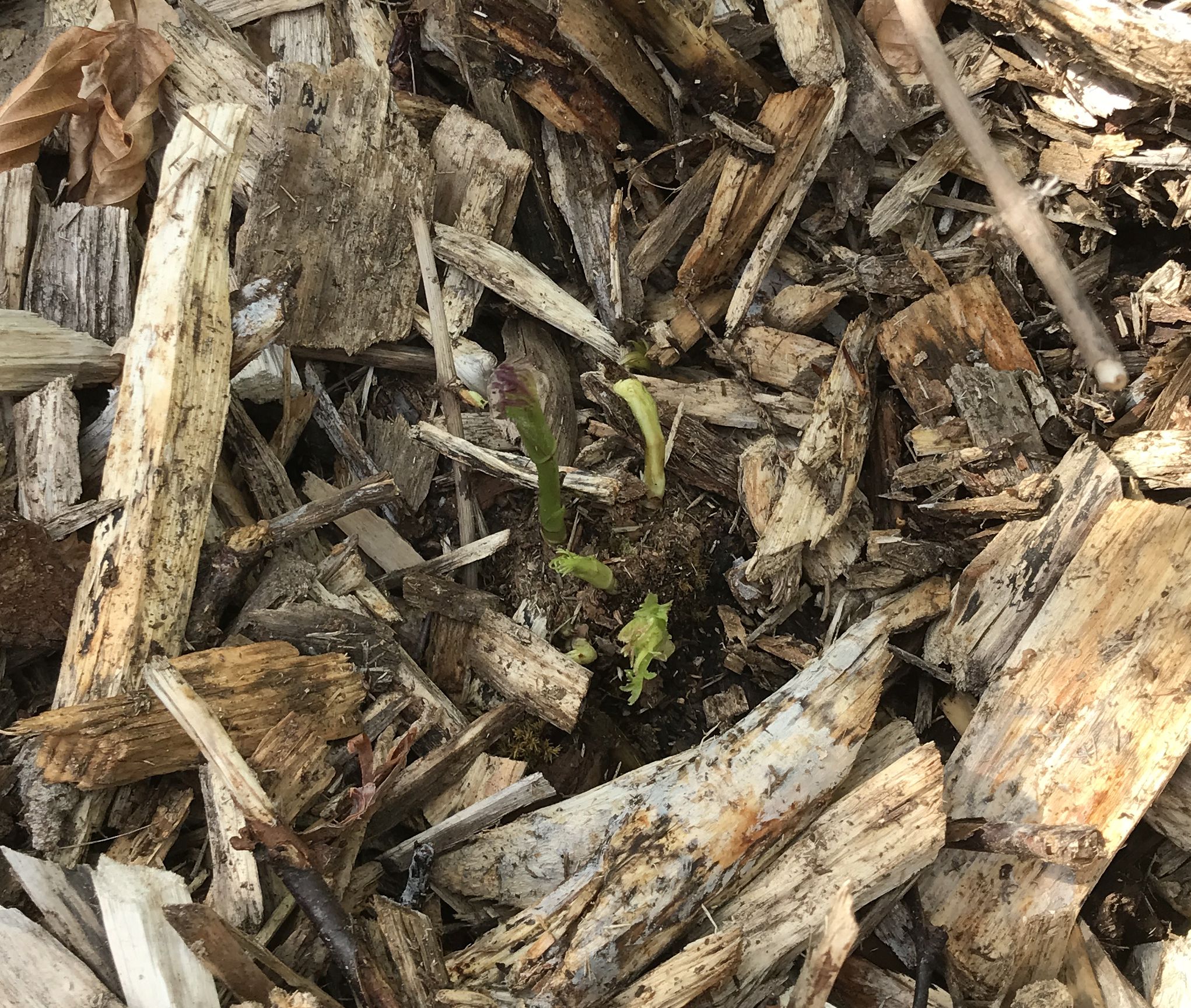
I spotted something growing in my wood-chip-covered raised hugelkultur bed and was a bit sad that this would happen. Still, when I started carefully digging around the “weed” I discovered it was part of one of the old logs, Goat willow (Salix caprea), I had put in the raised bed.
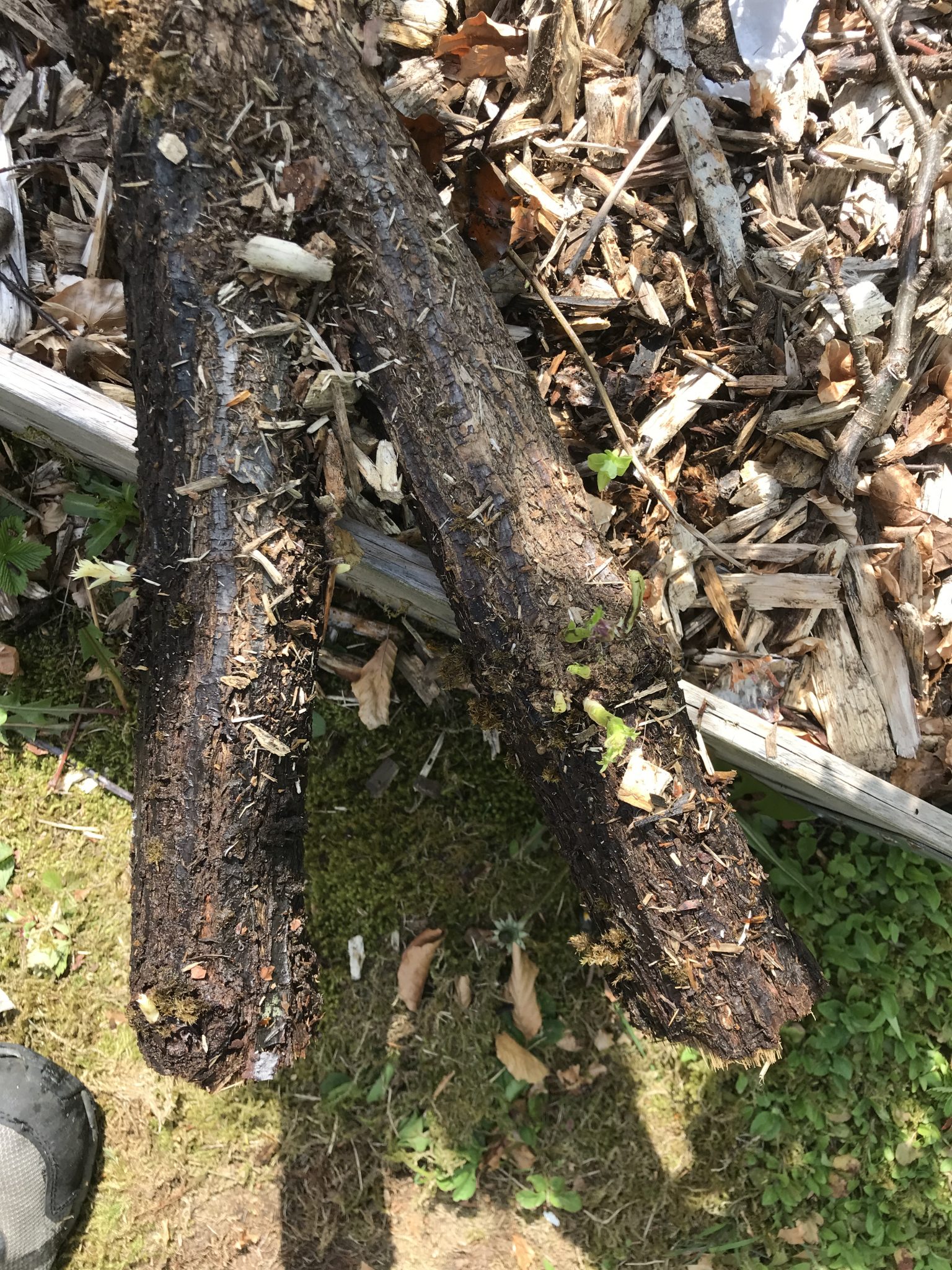
When I carefully dug it out, I noticed it had many leaves and new branches forming well on its way. These were not there when I made it in last fall. Further, the log wasn’t newly cut down either. It was at least a year, if not more, older. It had been partly covered with lots of natural mulch and in shade, this might have had something to do with how it managed to stay alive until this happened.
Goat willows are known to be very easy to start from branches, they will often do that when it’s not intended by the person that cut down the branch.
My lesson from this is that if I ever use Goat willow in my hugelkultur beds I will make sure they actually are dead, or dig them deeply, and not use them near the top in a raised bed as I did here.
The Haskap Bush Oversight
In an effort to provide wind protection and maximize sun exposure, I planted two Haskap bushes in front of a raised Hugelkultur bed. While the idea seemed sound, I didn’t account for how tall the Haskap bushes would grow. As a result, they now cast a significant shadow over the Hugelkultur bed, affecting the plants growing there.
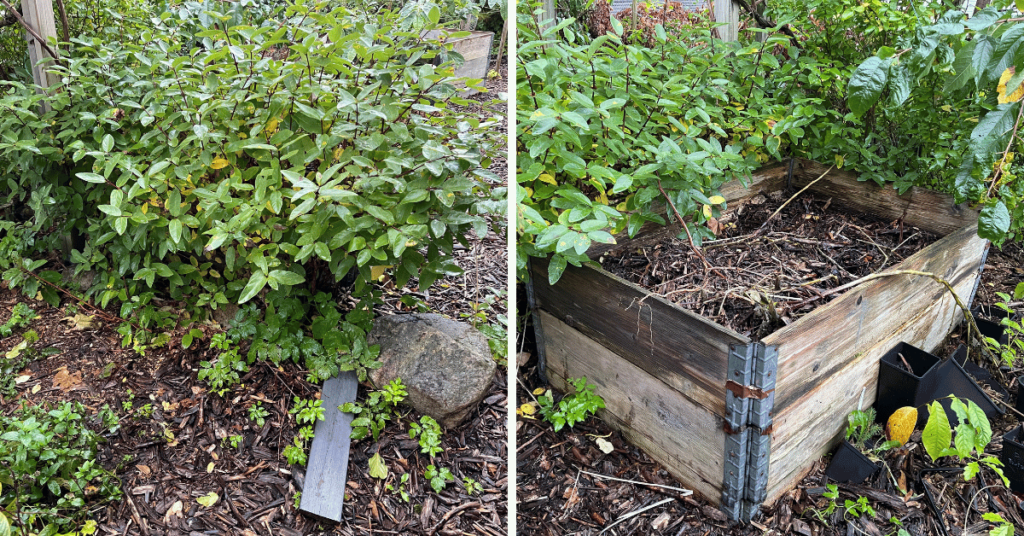
On the photo to the right, you can see it from the back side, further illustrating how the Haskap bushes have overshadowed the bed.
What Happened?
- The Haskap bushes grew taller than expected.
- The raised Hugelkultur bed is now in the shade, affecting its productivity.
Lesson Learned
- Be mindful of what you plant near your Hugelkultur beds, especially when it comes to the height and spread of the plants.
- Consider the long-term growth of plants and how they may affect the sunlight reaching your Hugelkultur bed.
For more on Haskap bushes and their growth habits, you can refer to our Plant Profile on Haskap Berries.
Conclusion
Hugelkultur is a rewarding and sustainable approach to gardening that offers numerous benefits, from improved soil fertility to efficient water usage. However, like any gardening method, it comes with its own set of challenges and potential pitfalls. Whether it’s design-related issues like incorrect wood selection, watering mistakes, or plant choice errors, each aspect requires careful consideration and planning.
My personal experiences, from the unexpected growth of Goat Willow logs to the overshadowing Haskap bushes, serve as cautionary tales. These firsthand accounts underscore the importance of being mindful at every stage of your Hugelkultur journey, from initial setup to long-term maintenance.
It’s important to acknowledge that more mistakes will inevitably come our way. However, each mistake carries a lesson, offering an opportunity for growth and improvement. I will continue to update this article as I encounter new challenges or receive valuable tips from others on what to avoid.
By being aware of these common mistakes and taking proactive steps to avoid them, you can optimize your Hugelkultur garden for both productivity and sustainability. This holds true regardless of your geographical or climatic conditions, making Hugelkultur a versatile and eco-friendly gardening solution.
If you have made a mistake others can learn from and that you wish to let others learn from then get in touch and tell me about it 🙂
kenneth@hugelkulturworks.com
Elevate Your Hugelkultur Game: Meet the Plum Tree!
Learned a lot from your hugelkultur mistakes? Ready to take your sustainable gardening to the next level? Dive into our latest Plant Profile on Plums. Discover how this versatile fruit tree can be a gem in your hugelkultur setup, offering both delicious rewards and eco-friendly benefits!


